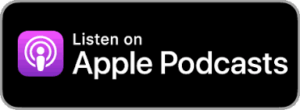Title: Behind the Mic: Crafting ‘Biz and Life Done Well’ Episodes
Featuring Peter Wilson
Peter: I’m Peter Wilson with bizmarketing.com, host of the Biz and Life Done Well podcast, and this week is a little different. I’m gonna share with you a little behind the scenes, how we produce our podcast episodes, some of the tools we use, give you a little background on that. So should be an interesting week. So now I’m sharing my screen. So what I did a little earlier is I recorded a brief portion of a podcast episode on my Zoom recorder.
That’s this thing that I’m holding here. It’s a digital recorder. It’s called a Zoom h six. Nothing to do with the Zoom conferencing. This is a completely different company.
This is a higher end digital audio recording tool. And if you’re doing podcasts recording in person locally, this is what I would recommend. I also use one of my Shure microphones, and I’ve got four of these. So I just plug this into my Zoom recorder, I made an audio recording. Now what I’m gonna do is I’m gonna show you how we use AI and other tools to produce our podcast episodes.
So here is a tool that I’ve been using called Descript, and this is a tool that does a lot of things. One of the cool things it does is it does audio transcription, so it’ll transcribe an audio file. So I recorded something here on my Zoom, and now what I’m gonna do is create a new project, and we’ll just do an audio project. So I have over on here, in my files, this Zoom file, which is a dot WAV file audio file. So I’m gonna just drop that into here, and that’s it.
Now that file is getting analyzed and getting transcribed. And then I’m gonna say that the speaker one is me because I was the only person on there. So now it’s transcribing the audio file and turning it into text. Now what’s really cool about Descript is you use this to actually edit. So you don’t even edit the audio down here, which is this stream.
So I’ll go ahead and play a little of this so you can hear what’s going on. Test test. That might be a little loud. We’ll turn that down. Welcome to the Biz and Life Done Well podcast.
So what you can see here is I’ve got all this noise, you know, wasted space here. So I’m just gonna go up here, highlight it, hit delete, and now that’s gone. So now the podcast starts out here. Welcome to the Biz and Life Done Well podcast. Now, I did notice that there was a little transcription error here, so I took out the period and Welcome to the Biz and Life Done Well podcast.
I’m your host, Peter Wilson. Today we have a special episode. So a few of the things that I can do with this Descript software is remove filler words. Now you’ll see I’ve said a couple times down So it was almost six years ago. What I can do is I can click on this word here, and then I can either remove it or replace it.
And also over here, I have a tool that says remove filler words. So I just clicked on that, and it highlights all the filler words here. And now all of those phrases are removed. Now the other thing that I can do with some of the tools here is I can remove the word gaps. So I can click on this shorten word gaps, and I’ve got it set up to remove anything less or anything more than seven tenths of a second.
It will shorten them all down to three tenths of a second. So I’ll go ahead and do that. So it shortened 12 word gaps. So now we have an audio podcast. So that is the finished edited audio side.
There’s a couple other steps that I wanna do. So I’m going to export this file to my downloads. I want to export the transcript. I go export and I export the transcript and it’ll export it as a text file. Now we’re done with Descript.
So we can turn this software off. And now we are going to take the audio file and we are going to drop it into Auphonic. This is just a website online. And we will add the audio to this Auphonic, and then we’ll say upload it and edit it. Now we can actually add an outro to this.
It’ll automatically do that. So I’ll select add an outro. The outro is what happens at the end an audio. It’s just kinda like, hey. Thanks for joining us.
Hope to see you again soon. Make sure you leave a review. So what this software does is this cleans up the audio, removes any background noise, and it also will level. So if you have two people talking on a podcast and one is remote and or one was just further away from the mic, it will balance everything out for you. While that’s happening, I want to show you what we do with the transcript of the audio.
I like to use Claude, which is Anthropic, and we have the professional plan. This is one of the AI models, the chat AIs. So we use Anthropic, Claude, we use Katherine, which is ChatGPT. We renamed ChatGPT to Katherine because we said, well, it sounds like Chatty Cathy, but we wanted to have Katherine, a little more dignified name there. So we call her Katherine, and then the other AI model that we use is Perplexity.
I am going to upload the transcript text file. Now I’m going to say, please analyze the attached file and create a description. Well, first I will tell it attach file, which is a transcript of a short podcast episode. Please create a brief description and 10 click worthy or, what should I say, engaging title ideas. The host of the podcast is Peter Wilson.
So we got our brief description in this behind the scenes episode of Business Life Done Well. I provide insights into podcast production process. He discusses the show’s history, evolution, equipment used, including details about the equipment that he uses. And so this is pretty good. Then we have here some engaging title ideas.
So if you’ll recall, I mentioned in there that we were at six years and 113 episodes. So I thought this looks good, Our podcast journey revealed. Behind the Mic, Peter Wilson’s podcast Tech Breakdown. That’s kind of interesting. From Mic to AI, The Evolution of Business and Life Done Well.
The Sound of Success, The Tech Behind Our Business Podcast. That sounds pretty good. We’ll decide on which one to use later. That is what we did to get the podcast description and some title ideas. We’ll obviously edit that.
So now I can go over here, and you can see the waveform for the file that I input versus the output waveform. So I can download this file here. This is the actual audio file that’s been leveled using Authonic. Now I will go over to my podcast hosting software. So we use Transistor for our podcast hosting, And we really like Transistor.
They’ve been around for quite a while. And what’s nice is they produce they actually push our podcast episodes out. So I’ll click on here, and then I’ll click on new episode. And now I can drop the title, the audio file, the description that we just wrote, and that’s it. Then I can just hit save and publish now.
Now the podcast will go live. It will go out onto Apple and Spotify. We’ve been around for six years. We’ve produced 113 episodes. This will be the one hundred and fourteenth.
All of our podcasts are available on Apple, Spotify and on our website, bizmarketing.com. And if any of you are doing your own podcast, I’d love to hear what you’re doing to produce your podcast. But this is a relatively streamlined way to produce podcasts. If you need any help, reach out. You can send us an email podcastbizmarketing dot com and I’d love to share any other info and insights on podcast production.
You need help with your marketing, also you can reach out to me, Peter Wilson, Peter. Wilsonbizmktg dot com. Thanks for listening this week. See you next time.

